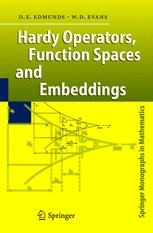

Most ebook files are in PDF format, so you can easily read them using various software such as Foxit Reader or directly on the Google Chrome browser.
Some ebook files are released by publishers in other formats such as .awz, .mobi, .epub, .fb2, etc. You may need to install specific software to read these formats on mobile/PC, such as Calibre.
Please read the tutorial at this link: https://ebookbell.com/faq
We offer FREE conversion to the popular formats you request; however, this may take some time. Therefore, right after payment, please email us, and we will try to provide the service as quickly as possible.
For some exceptional file formats or broken links (if any), please refrain from opening any disputes. Instead, email us first, and we will try to assist within a maximum of 6 hours.
EbookBell Team

4.8
54 reviewsClassical Sobolev spaces, based on Lebesgue spaces on an underlying domain with smooth boundary, are not only of considerable intrinsic interest but have for many years proved to be indispensible in the study of partial differential equations and variational problems. Of the many developments of the basic theory since its inception, two are of particular interest:
(i) the consequences of working on space domains with irregular boundaries;
(ii) the replacement of Lebesgue spaces by more general Banach function spaces.
Both of these arise in response to concrete problems, for example, with the (ubiquitous) sets with fractal boundaries.
These aspects of the theory will probably enjoy substantial further growth, but even now a connected account of those parts that have reached a degree of maturity makes a useful addition to the literature. Accordingly, the main themes of this book are Banach spaces and spaces of Sobolev type based on them; integral operators of Hardy type on intervals and on trees; and the distribution of the approximation numbers (singular numbers in the Hilbert space case) of embeddings of Sobolev spaces based on generalised ridged domains.
The significance of generalised ridged domains stems from their ability to 'unidimensionalise' the problems we study, reducing them to associated problems on trees or even on intervals.
This timely book will be of interest to all those concerned with the partial differential equations and their ramifications. A prerequisite for reading it is a good graduate course in real analysis.